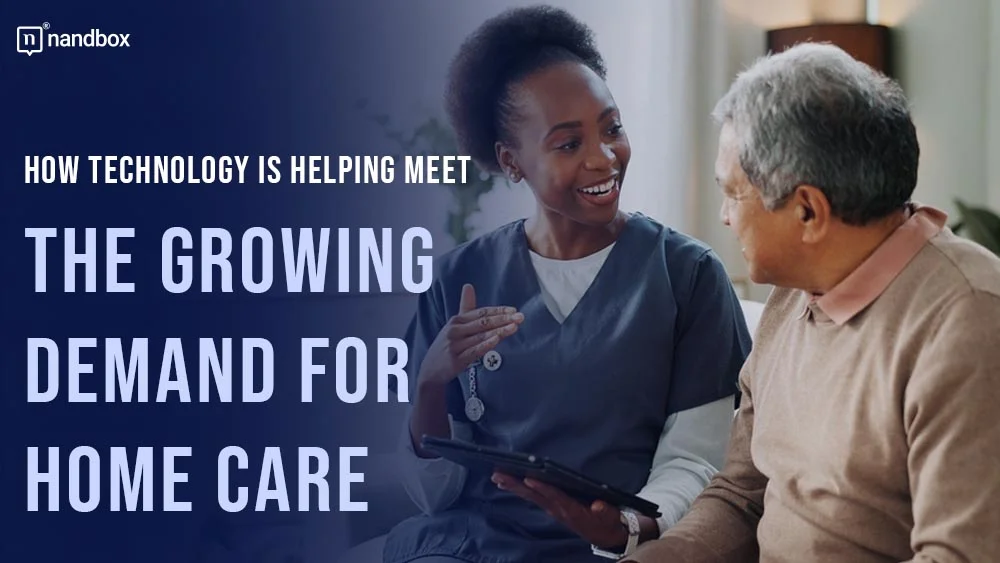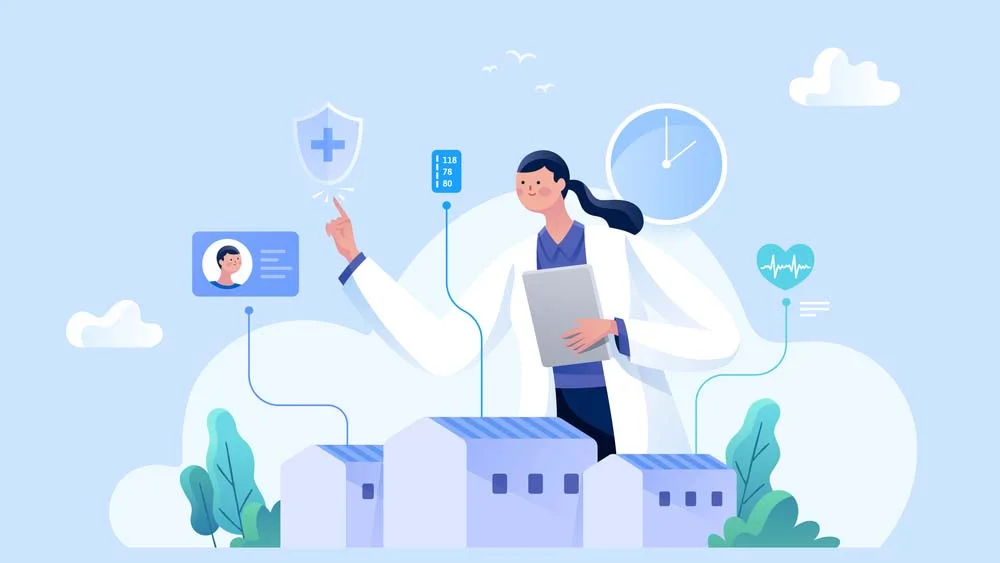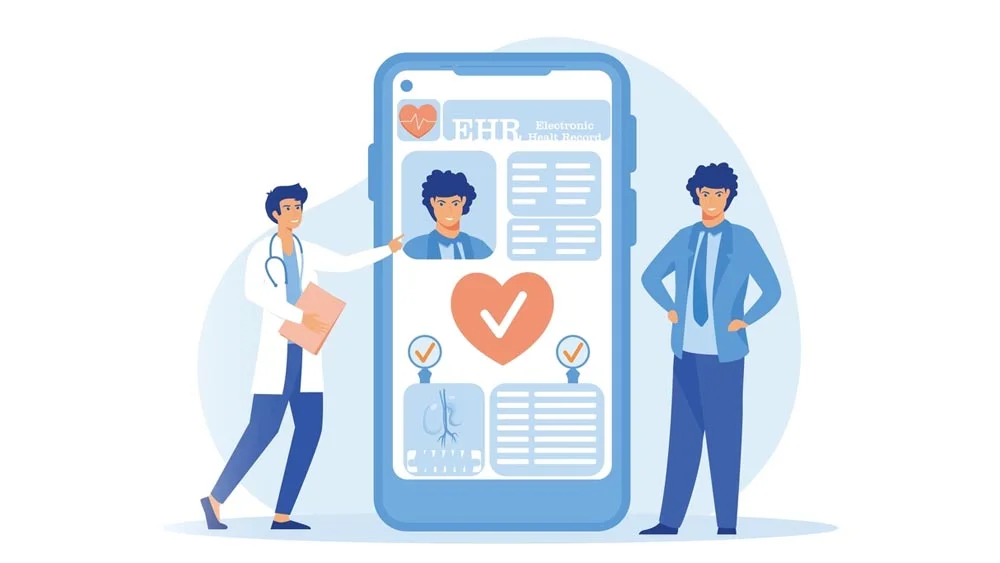Technology has been instrumental in creating innovative solutions that enhance the efficiency, accessibility, and quality of home care services. This paper tries to discuss how technology has taken the service delivery of home care to another level by empowering caregivers to offer better care that empowers patients, thus bringing out better results.
Remote Monitoring
Complementary to telehealth are devices for remote monitoring, such as wearable sensors and smart health devices, which enable real-time measures like heart rate, blood pressure, and glucose levels. The devices provide information that may trigger an alert to healthcare providers in order to enable care management before issues become critical.
AI and ML
These technologies analyze large volumes of data to identify trends and predict outcomes, enabling more personalized and effective care plans. For example, AI algorithms can be used to analyze the patient’s history of illness, lifestyle, and current health condition before rendering treatment recommendations that are designed to bring forth positive outcomes.
Virtual assistants and chatbots, now powered by artificial intelligence, are also increasingly finding a place in cdhci. They answer patients’ questions, provide medication reminders, and offer mental health support. AI can optimize schedules and workload management to ensure each patient receives appropriate care.
Not only will AI and ML improve patient care, but they will also enhance the efficiency of home care operations. Predictive analytics can estimate patient needs, thus efficiently allocating resources to where and when they need caregivers the most.
Smart Home Technology
As smart home technologies develop, the chances are getting greater for people to live independently despite age or chronic conditions. Smart devices, from smart thermostats to automated lighting and voice-activated assistants, might be integrated into a home care plan with maximum efficiency to create a setting safer and more comfortable to live in.
For instance, smart sensors can detect falls or unusual activity patterns and notify caregivers or emergency services. Smart pill dispensers ensure that patients take their medication at the right time and in the right dosages to minimize medication errors.
It allows them to control the environment and access some entertainment without using a hand through voice-controlled devices such as Amazon Echo or Google Home. This further allows, in some cases, people, especially those with reduced mobility, to communicate with their carers without the use of hands.
Mobile Apps and Digital Platforms
Mobile applications and digital platforms are rapidly changing the coordination and delivery of home care. Such devices can keep caregivers, patients, and family members connected, sharing information, and managing care plans in a much more seamless way. For instance, many home care providers now also utilize lawn care software to manage external services, ensuring that all aspects of home management, inside and out, are efficiently coordinated alongside healthcare needs.
For example, care coordination apps give caregivers the ability to update patient records, track appointments, and communicate in real-time with the remainder of the care team.
These mobile health apps facilitate easy health monitoring, symptom tracking, and reminders for appointments or medication. Some even offer virtual coaching or therapy sessions that help patients stay engaged with their treatment plans.
Also, it provides the apt matching between caregiver and patient. Here, families can screen through profiles to get a qualified professional matching their needs and preferences for improved fitting and satisfaction with the care provided.
Robotics and Automation
Robotics and automation are slowly stamping their mark on home care. These robotic devices include the likes of robotic vacuum cleaners and assistive robots that provide companionship to enhance the whole care experience.
They can help patients with mobility problems to get out of bed, bathe, or move around the house. Assistive robots are safe, reliable, and easy to operate, hence a great addition to any home care setup. For example, Robotic exoskeletons can assist people with limited mobility in walking, increasing their independence and enhancing their quality of life.
On the other hand, robotic pets offer emotional support to patients, especially those who have dementia or Alzheimer’s disease. These robots mimic the behavior of real pets to comfort and accompany patients without the responsibilities of feeding, grooming, or walking.
Data Analytics and Electronic Health Records (EHRs)
Data analytics and EHRs will continue to integrate into home care, improving the capability of caregivers to offer personalized, effective care. EHRs put together patients’ medical histories, treatment plans, and ongoing care in one digital record, thus making it easier for caregivers to access and update information.
Enormous data from EHRs and health monitoring devices can be processed to identify trends, predict outcomes, and optimize the plan of care through data analytic tools. For example, it can run analytical tools on the data of different patients and identify common denominators working toward recovery or depict potential risks that have to be taken care of.
These insights enable caregivers to make informed decisions, adjust treatment plans when necessary, and ultimately provide better care. Besides, the EHRs give all those concerned with a patient’s care team the same updated information at any given time, thereby improving communication and coordination.
Virtual and Augmented Reality
Virtual reality and augmented reality represent relatively new technologies that, little by little, are being applied to home care. Applications include VR options for physical therapy, mental health treatment, and pain management, all giving patients more immersive experiences to help in healing and relaxation.
For example, VR can simulate calming virtual environments to calm patients who feel anxious or even treat chronic pain. It can also work with therapy in simulating exercises and tracking a patient’s progress in real-time.
On the other hand, they can use AR to provide real-time information regarding a patient’s condition to their caregivers. For example, using AR glasses that project a patient’s vital signs onto their field of vision, caregivers can do other tasks while monitoring their health status in real time.
Although these technologies are still in the early stages of adoption in-home care, they have significant potential to improve health outcomes and enhance the quality of care.
Conclusion
From telehealth and AI to wearable technology and smart home devices, innovations are changing the way in-home care will function for quite some time to come, fundamentally changing how both caregivers and patients manage their outcome equations.
The next waves of technological development will further leapfrog advanced solutions into the home care sector and improve the lives of those who have come to count on these services.
Home care providers must stay updated on technological changes and manage the integration of new technology into practice to ensure the best possible care in an increasingly competitive environment.
FAQs
- How is telehealth changing home care services?
Telehealth empowers patients to have medical consultation and management from a distance, removing much of the in-person visits to a large degree and increasing access to care.
- What role do wearable technologies play in-home care?
Wearable technologies monitor health metrics on a continuing basis and thus offer real-time data to the carer for the proactive management of chronic diseases.
- Why is cybersecurity important in-home care technology?
Cybersecurity is important in making sure that there are no breaches of patient information and that sensitive health information retains its confidentiality and integrity.





